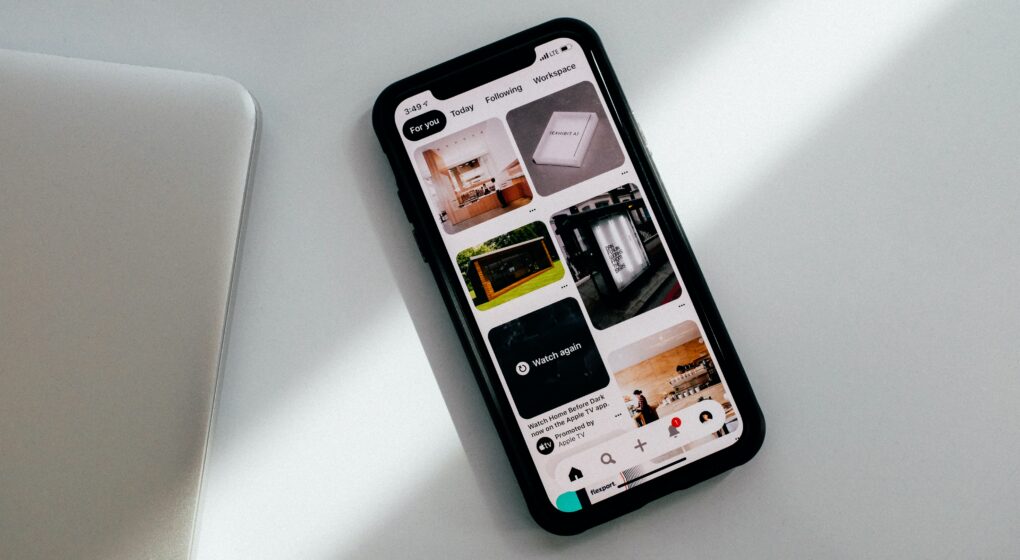
Known as one of the most visually captivating social media platforms – from its inception as a virtual pinboard to its evolution into a powerful advertising hub – Pinterest has redefined the way we discover, save, and share inspiration. A unique fusion of social networking and visual discovery, Pinterest has become a go-to platform for individuals seeking inspiration across a myriad of interests. But it’s not just users who have found a haven on this digital canvas; brands of all sizes have recognized the potential to engage with highly motivated audiences actively seeking inspiration, through both organic content and paid advertising.
In this article, we’ll walk you through the basics of Pinterest advertising, exploring how businesses can effectively harness its potential to connect with their target demographics and foster creativity in entirely new ways.
What is Pinterest?
With 444 million active monthly users, Pinterest is a social media platform and image-sharing website that allows users to discover, save, and share visual content, primarily in the form of images. Often described as a visual bookmarking tool, the platform enables users to curate and organize collections of images, called “pins,” on virtual pinboards. These pins can include a wide range of content, such as photos, recipes, fashion inspiration, home decor ideas, travel destinations, and more. Users can then curate their content across their own personalized boards with different themes or interests.
Who’s Using Pinterest?
The Pinterest app (both desktop and mobile) is extremely popular among users who are looking for ideas and inspiration in various domains, as well as businesses and creators who want to showcase their products or services in a visually appealing way. While male and nonbinary users have a presence on the platform, it was women between the ages of 25-44 that made up 44% of advertising audiences in 2022. And this advertising came from a diverse array of businesses including retail, travel, beauty, home decor and more. Digital ads on Pinterest showcase products, ideas, and services – capitalizing on users’ discovery-oriented behavior to engage audiences seeking inspiration. Pinterest ads also allow brands to link directly to their offerings, helping to drive sales and brand visibility.
What Pinterest is Good for (And Not So Good For) in Digital Advertising
Since a large percentage of Pinterest users are on the platform to discover new ideas and products, the app offers a mix of free and paid advertising tools that can earn you and your business 3x more conversions and 2x the ROI on your ad spend, versus paid ads alone.
The Pros
- Visual Content Appeal: Pinterest is all about aesthetics and visual content. If your product or service has a strong visual component, such as fashion, home decor, or food, Pinterest can be a goldmine for showcasing your products!
- Product Discovery: Users come to Pinterest actively seeking inspiration and new ideas, making it an ideal platform for businesses to introduce new products or concepts and catch the attention of users who are open to discovering something new.
- Keyword Targeting: Pinterest offers keyword targeting, allowing advertisers to reach users actively searching for products or services related to specific keywords. This can help businesses achieve highly relevant ad placements.
- High Purchase Intent: Pinterest users tend to have high purchase intent. They use the platform to plan future purchases, so your ads can directly influence their buying decisions. In 2022, Pinterest users spent 2x as much on advertised products every month compared to other social app users.
- Longevity: Unlike some social media posts that disappear quickly in a fast-moving feed, Pinterest pins can have a significantly longer lifespan. Users frequently revisit their pins, providing ongoing exposure for your content.
The Cons
- B2B and Highly Technical Products: If your business offers highly technical or B2B (business-to-business) products and services that don’t have strong visual appeal, Pinterest may not be the best fit. The platform is more geared toward consumer-oriented products.
- Limited Demographic Reach: While Pinterest has a substantial user base, it may not have as broad a reach as platforms like Facebook or Instagram. If your target audience is primarily in a younger demographic, you might find other platforms to be more effective in reaching them.
- Time-Intensive Content Creation: Pinterest is most effective when you regularly create visually engaging content like pins and infographics. If your business lacks the resources for ongoing content creation, maintaining an engaging Pinterest presence can be a challenge.
- Direct Response Advertising: While Pinterest can be effective for brand awareness and product discovery, it may not be the best platform for immediate direct response advertising goals. It often takes time for users to move from initial engagement to purchase decision.
Special Considerations for Successful Advertising
To create an effective and efficient ad campaign on Pinterest, it’s important to understand the unique dynamics of the platform. Here are a few of our expert tips to help you create campaigns that resonate with your target audience and drive results.
- Mobile optimization is key, as eighty-two percent of Pinterest users access the platform via mobile devices. Ensure that your pins, landing pages, and website are fully mobile-optimized. Testing the mobile experience is crucial to guarantee a seamless journey for users on smaller screens.
- Develop a robust keyword strategy by integrating relevant keywords into your pin descriptions, titles, and boards. Effective keyword optimization enhances the discoverability of your pins.
- Align your Pins with relevant categories to reach users who are genuinely interested in your niche. Content categories matter significantly on Pinterest. Users often explore content within specific categories of interest. Selecting the right categories is critical in helping your content reach the right audience.
- Conduct A/B tests on various elements of your pins, including images, titles, descriptions, and targeting options. Leverage Pinterest Analytics to evaluate which components resonate best with your audience.
- Invest in high-quality images, graphics, and videos that can captivate your audience’s attention. Pinterest is inherently visual, and your success hinges on creating content that stands out. Consistency is also key to maintaining an engaging Pinterest presence. Regularly share fresh content, update your boards, and engage with your audience. A consistent approach builds brand recognition over time.
- Set a clear advertising budget and monitor your spending closely. Pinterest offers different pricing models, including CPC (cost per click) and CPM (cost per thousand impressions). Adjust your budget regularly to optimize performance for specific campaign goals.
- Implement conversion tracking on your website to measure the effectiveness of your Pinterest ads. Monitor key actions such as purchases, sign-ups, or other desired conversions to accurately assess ROI.
The Bottom Line
Pinterest advertising offers a wealth of opportunities for businesses looking to expand their digital marketing reach. With its visually-driven platform, strong user engagement, and unique search capabilities, Pinterest can be a valuable addition to your advertising strategy. With dedication and a strategic approach, you can harness the full potential of Pinterest to elevate your brand, connect with your target audience, and achieve your marketing goals. Happy pinning!
About VONT Performance Digital Marketing
At VONT we believe that change is the only constant in the digital world – and that excites us. When tools and environments are constantly changing, new opportunities to help our clients achieve success are constantly arising. Each new advertising technology, social platform, or design approach allows us to improve on the results we achieve for our clients.
We believe in this idea of continual fine-tuning so much that we named our company VONT, which means to achieve exponential improvement in incremental steps. It is our core belief, and the reason why we are not simply a web design company or simply a digital advertising agency, but rather a long-term, single source partner providing a comprehensive array of web development and digital marketing capabilities.


